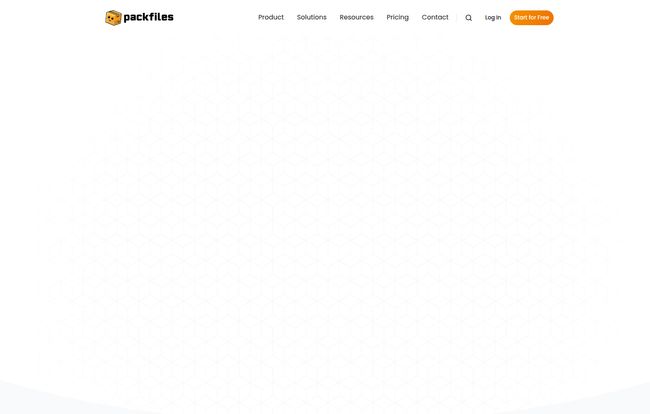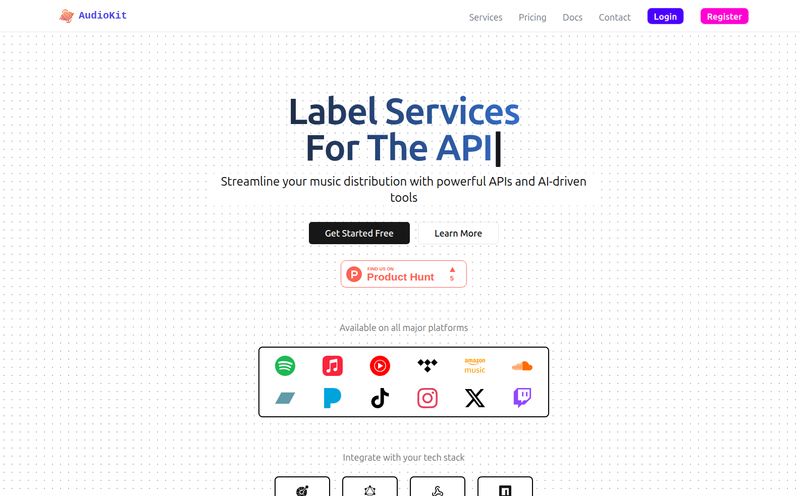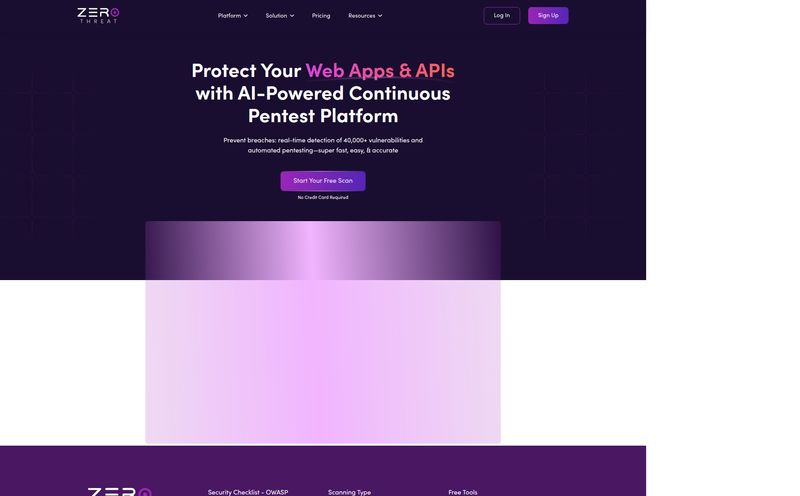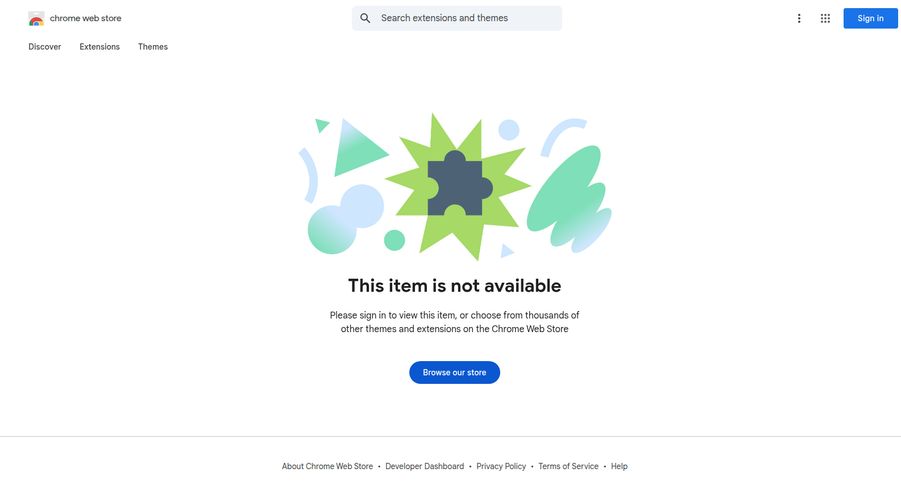If you've been in the dev world for more than a few years, you’ve been in that meeting. The migration meeting. The one with the Gantt charts that stretch into next year, the endless debates about what to move, what to archive, and who's responsible for that one ancient, rickety repository no one’s touched since 2012. The coffee is usually stale, and the sense of impending doom is palpable.
I’ve sat through enough of them to know that enterprise-scale code migration is less a technical problem and more of a… human one. It’s about coordination, communication, and managing sheer complexity. For years, we’ve cobbled together wikis, spreadsheets, and sheer willpower to get from Platform A (looking at you, Bitbucket Server and Azure DevOps) to Platform B, which is increasingly GitHub Enterprise.
So when I came across a tool called Packfiles, which claims to offer “lightning fast migration,” my inner cynic raised an eyebrow. But then I looked closer. And what I found wasn't just another script to `git push` a bunch of repos. It’s something different. Something smarter.

Visit Packfiles
So, What Exactly Is Packfiles Warp?
Packfiles isn’t just a data shovel. That's the first thing you need to get. It’s more like a hyper-organized moving coordinator for your code. It hooks into your source environment, like Azure DevOps or Bitbucket, and instead of just yanking the data across, it does something brilliant: it turns your entire migration project into a series of interactive GitHub Issues.
Think about that for a second. The whole messy, complicated process of moving, right there, inside the platform you're moving to. It scans your repos, pipelines, and artifacts, and organizes them into a clear, actionable project plan within GitHub. Your engineers don’t have to learn a new tool or sit in another status meeting. They just… work on their Issues. It’s one of those “why didn’t I think of that?” ideas that feels incredibly obvious in hindsight.
Why We All Secretly Hate Migrations
The pain of migration isn't about moving files. It's about losing context. It's the institutional knowledge trapped in comments, the weird build dependencies only one person remembers, the politics of which team's stuff gets moved first. A standard lift-and-shift approach often feels like moving to a new house by just throwing all your belongings out the window of the old one and hoping they land safely in the new one. Spoiler: they dont.
You end up with weeks, sometimes months, of teams being paralyzed, stuck between two systems, unable to fully commit to the new one. Productivity tanks, and frustration soars. This is the friction that Packfiles seems laser-focused on eliminating.
How Packfiles Actually Changes the Game
Alright, so it’s a neat concept. But how does it work in practice? From what I can tell, the magic is in a few key areas.
From Utter Chaos to Tidy GitHub Issues
The core feature is turning the migration into a manageable, visible project. By converting everything into GitHub Issues, you get a native to-do list that developers already live and breathe. Each Issue can represent a repository, a pipeline, or a specific task. You can assign owners, add labels, have discussions, and track progress right where the work is happening. No more cross-referencing a stale spreadsheet. This is about making the migration feel less like a top-down mandate and more like a collaborative engineering project.
Your Copilot for the Big Move
This is the part that got me really excited. Packfiles integrates with GitHub Copilot. We've all seen Copilot's power in writing code, but integrating it into a migration process is a clever move. Imagine your developers getting stuck on a tricky part of a pipeline conversion. With built-in Copilot support, they can get real-time suggestions and solutions right there in their workflow. It lowers the barrier to solving problems and prevents that one person from becoming the bottleneck for all migration-related questions. It's a support system that scales.
It Just Feels… Familiar
The biggest hurdle to adopting any new tool is the learning curve. Teams are busy. No one wants to spend two weeks learning a new platform just to use it for a one-off migration project. Packfiles seems to understand this deeply. By living inside GitHub and using its native elements (like Issues), the experience is immediately familiar. There’s no clunky, separate UI to master. This focus on developer experience is something I wish more enterprise tools would take to heart.
The Good, The Bad, and The Pricing Model
No tool is perfect, right? After drooling over the features, I put on my critical SEO blogger hat and dug into the practicalities.
The upsides are clear. It's fast, it's developer-centric, and it solves a real, painful problem in a very elegant way. The security is also a stated priority, with a promise of zero compromise, which is table stakes for any enterprise-grade tool.
Now, let's talk about the elephant in the room: the pricing. Packfiles zigs where almost every other SaaS tool zags. Instead of a monthly or annual subscription, they charge per “Box.”
My first reaction was, huh?
It’s an interesting, if slightly confusing, model. It feels like buying a specific number of moving boxes for a house move rather than renting a truck for the day. For a massive, one-time migration, maybe it makes perfect sense—you buy the capacity you need, you use it, and you're done. No lingering subscription fees for a tool you no longer need. But for organizations that might have ongoing, smaller migrations, it feels a bit less flexible. Another small gripe is that the website doesn't give a ton of detail on what's specifically included in each Box tier. I'm hoping that's something they'll flesh out more over time.
A Closer Look at Packfiles Pricing
Let's break down the tiers so you can see what I mean. The model is based on migration capacity, or “Boxes.” It's a bit abstract, but here’s the gist.
| Plan | Price | Best For |
|---|---|---|
| Free Tier | Free | Getting started or very small projects. Gives you 100 free migrations with no credit card required. Super generous. |
| Small Box | $2,000 / Box | Individuals and smaller teams with a defined, limited migration need. |
| Medium Box | $15,000 / Box | Mid-to-large organizations that are managing a big migration or have ongoing needs. |
| Enterprise Box | Flexible (Custom) | The big leagues. For high-volume, complex enterprise migrations where you need to talk to sales. |
That jump from the very generous free tier to a $2,000 Small Box is significant. This pricing tells me Packfiles knows its audience: enterprises who understand that a failed or delayed migration costs way, way more than $15,000 in lost engineering hours and momentum.
Who Should Be Using Packfiles?
After my analysis, I have a pretty clear picture of the ideal Packfiles customer.
This tool is a dream for:
- Large organizations planning a move from an on-prem or competing cloud solution like Azure DevOps or Bitbucket Server to GitHub Enterprise.
- DevOps leads and Engineering Managers who want to keep their teams productive during a migration and provide them with a familiar workflow.
- Project Managers who need a clear, real-time dashboard of migration progress without having to chase people for updates.
It’s probably not the right fit for:
- Small startups or teams already happily living in the GitHub ecosystem.
- Single developers moving a couple of personal projects. A simple `git remote add` and `push` will do the trick for free.
- Companies on a shoestring budget who can't justify the per-box cost, even if it saves time in the long run.
The Final Verdict: Is It Worth It?
So, do I think Packfiles is teh real deal? Yes, with a caveat. For the right company, this tool could be absolutely transformative. It's not just about moving code; it's about preserving momentum, sanity, and developer happiness. It reframes migration from a painful chore into a structured, manageable engineering project.
The unusual pricing model is the main thing to wrap your head around. But if you compare its cost to the salary-hours burned in endless planning meetings and migration-related downtime, it might just be a bargain. The generous free tier is the perfect way to test the waters. If you're facing a migration, I’d say it's a no-brainer to at least take their 100 free migrations for a spin.
It’s a smart solution to a notoriously dumb problem. And in my book, that’s always a win.
Frequently Asked Questions
- What platforms can Packfiles migrate from?
- Packfiles currently focuses on migrations from major platforms like Azure DevOps and Bitbucket Server directly to GitHub's Enterprise platform.
- How does Packfiles handle security?
- They state that their platform is built for secure migrations with zero compromise on security and privacy, which is essential for enterprise customers handling sensitive codebases.
- Can you explain the 'per Box' pricing again?
- Instead of a recurring subscription, you purchase a 'Box' which gives you a certain capacity for migrations. The Free tier offers 100 migrations, while paid Boxes offer larger capacities for bigger projects. It's a project-based pricing model rather than a time-based one.
- Is there a free trial for Packfiles?
- Yes, and it's quite generous. Their Free Tier allows you to perform up to 100 migrations without needing a credit card, making it easy to evaluate the tool for your needs.
- What makes Packfiles different from a simple migration script?
- The key difference is its project management approach. It doesn't just move data; it organizes the entire migration process into interactive GitHub Issues, allowing for collaboration, tracking, and management directly within GitHub.
- Do my developers need a lot of training to use Packfiles?
- No. A major benefit is its design, which leverages the familiar GitHub environment. Since it works with GitHub Issues and integrates with tools like Copilot, there's virtually no learning curve for developers already accustomed to GitHub.



